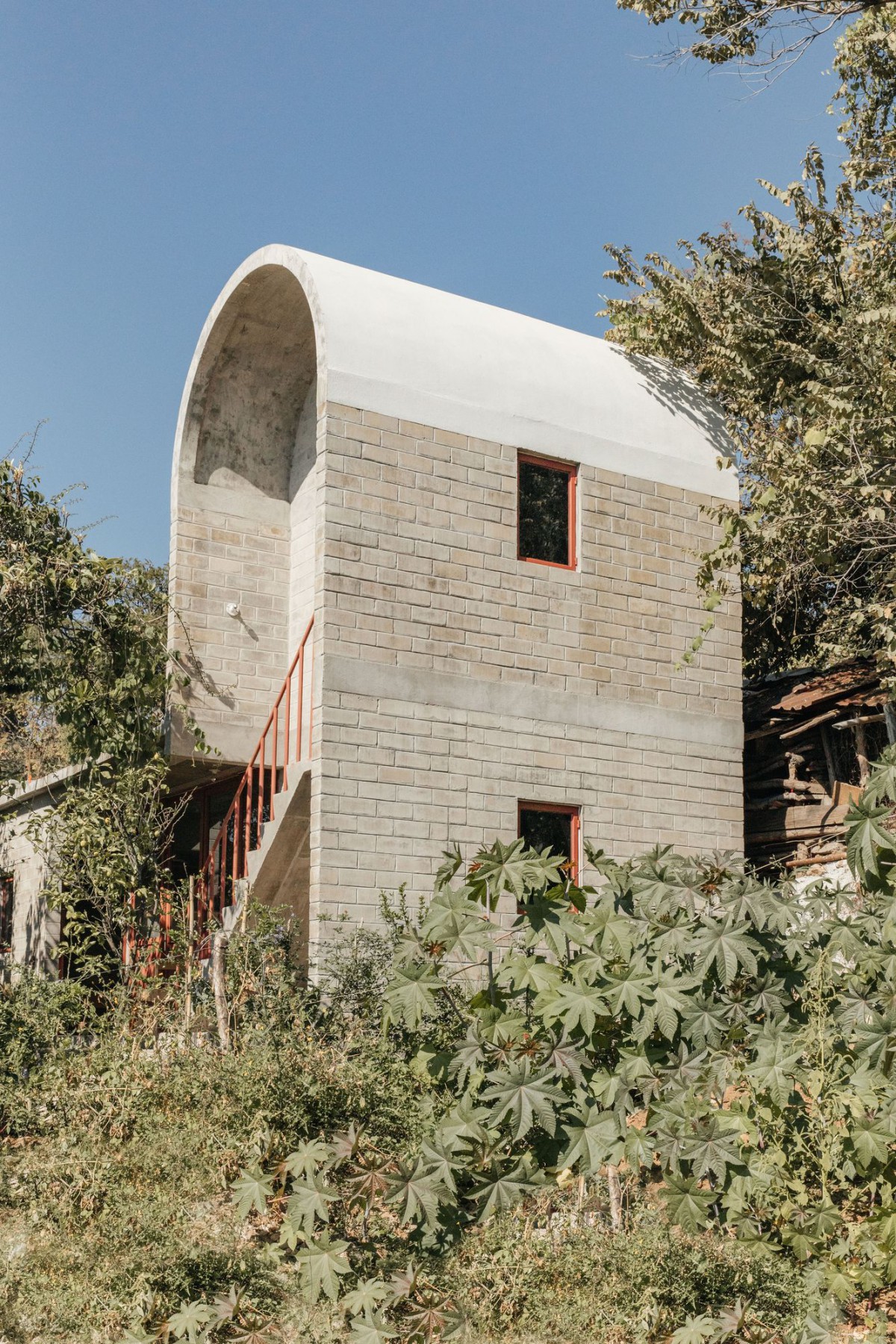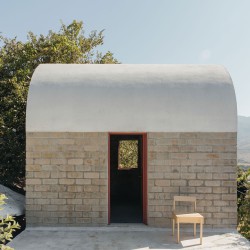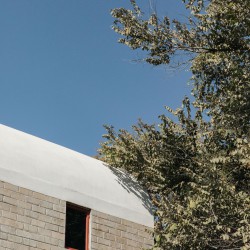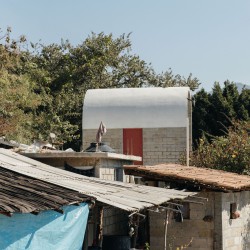Naso – José Ignacio Vargas . photos: © Maureen M. Evans . + divisare
After the earthquake of September 2017, Naso was invited by ReConstruir México to participate in the reconstruction of 1 of 50 houses selected at risk of their damage. Each of the selected houses involved local and international architecture offices, designers, collaborators as well as different institutions and donors such as: #LoveArmyMexico, Fundación Origen, ¡Échale! to your House, Fideicomiso Fuerza México and PienZa Sostenible.
Casa Martha is located between Malinalco – a renown archaeological and touristic site – and Chalma, one of the most important pilgrimage sites in Mexico. The family nucleus is made up of both parents and their two children. The mother is an older lady who has trouble walking, while the father suffers from blindness. The two children – single adults around 40 years old – live with them. The family situation and the conditions of its members were the starting point for the house design, resulting in three fundamental ideas: First, generate accessible, efficient and clear circulations to allow the independence of the elderly; secondly, to promote the interaction and coexistence between parents and children, as well as respecting their privacy; Finally, include spaces that open possibilities that foster the shared economy and thus facilitate the possibility of additional income for the family.
The location of the site was essential for the formal proposal of the house. Being on a hill, the property had two very different conditions. The first is of a very rugged topography and the second, where the original house was, is practically flat. It was decided to move the new house on the same surface as the previous one, thinking about the stability of the land, the ease of construction and the intention to avoid any unevenness in the living spaces to meet the accessibility needs of the parents. From this, the main volume of the rectangular plant emerged, within which are the spaces of common use: kitchen, dining room and bathroom; as well as two bedrooms. One of these two bedrooms was intended to be used by either of the two children, and on the opposite side was the main bedroom, whose space is lined with the kitchen and dining room and whose door is perfectly aligned with the bathroom door, allowing a direct circulation without any obstacle. The nucleus or the public space of the house, can be opened completely through sliding doors, so that the exterior is integrated into the house, which will end up functioning as a large porch, allowing its inhabitants to be immersed inside of the natural and social landscape that surrounds them.
The third room has greater independence, is located on a second level that is accessed by an independent staircase and can also use the roof of the main house as a terrace. Formally, the presence of this room adds character to the project through a concrete vault that refers us to the surrounding mountains, while responding to the rainy climate of the area. For all the reconstruction projects the same construction system was used, based on a compacted earth block manufactured on site, which can be seen on all the facades of this house. This material makes it easy to think of the house as a modular system with the ease of expanding or reducing, with a typology that can be adapted to a certain budget or according to the possibilities and needs of the moment.
The location of this particular house is very interesting since it is close to several points of tourist and pilgrimage attractions. For this reason, the fact of having the third independent bedroom to the rest of the house, allows us to think of an economic model that serves as support for the family’s income such as renting that room through platforms such as Airbnb or independent social contracts. This is how the house, in a very small area, has the possibility of accommodating different ways of life, while offering a stable, social and independent future to a family that needs it.
_








































